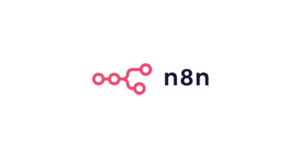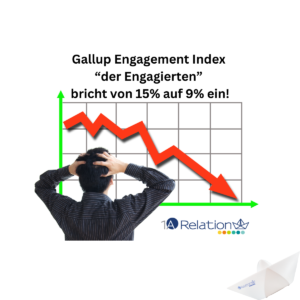Marc Benioff founded the CRM provider Salesforce in 1999. It was the first company to offer software via the cloud. Now the discussion about data protection in the cloud has been rekindled, not least because of the EU-DSGVO. Customer data is often at the centre of this debate, and it should not be forgotten that SaaS providers store and process unbelievable amounts of personal data on behalf of their customers, which goes far beyond e-mail addresses. It is therefore necessary to put the former SaaS model into a modern context and integrate the developments of the past almost two decades so that enterprise software can unfold its full potential. It can be seen that the boundaries between SaaS and on-premise applications are increasingly disappearing.
Benioff’s original arguments for a cloud-based SaaS model
In 2009 Benioff published the book “Behind the Cloud”. In it, he named the following four reasons for choosing a cloud-based SaaS model:
- The success of the salesperson is aligned with that of the customer. A subscription-based pricing model ensures this. With every new customer who uses the software, the price rises steadily. In contrast, client-server solutions require enormous investments right from the start and thus represent a high financial barrier.
- Software solutions that are available via a web browser enjoy greater acceptance. Users can access the software at any time and independently of the device. In addition, companies save costly client installation.
- Hardware investments are shared in a cloud-based SaaS model. In 1999 this was still an important aspect: for example, a GB of RAM still cost around $1,000.
- The software is available more quickly because installation, maintenance and upgrades are no longer necessary. Before founding Salesforce, Benioff was at Oracle. It usually took him several months to complete an Oracle installation.
These arguments also convinced numerous start-up companies, resulting in a massive increase in the number of cloud-based solutions.
The IT world looks different in 2018
Today it is clear how far-sighted Benioff was at that time in driving the world towards SaaS. Of his four reasons mentioned above, the first two are the most important ones for him:
- Subscription is the basis for the right pricing model: The subscription-based pricing model has proven to be the most effective way to achieve customer and supplier success for software and now many other business models such as Glossy Box or myMüsli. Numerous providers, such as Adobe or Microsoft, have adapted their pricing models to this.
- High user acceptance is crucial: software solutions that users can access via a browser or native apps are now ubiquitous. Users expect the same user experience from IT in everyday business and private life.
The other two arguments, which Benioff presented in 2009, are no longer relevant today. After all, hardware costs have fallen massively since then, so there is no deterrent to high investments here. The installation of software solutions or their updates has also become much easier, although the latter still represent a considerable expense due to the data volume or data migration.
What Benioff did not foresee
In recent years, other factors have emerged that challenge the original definition of SaaS. The irony here is that there are many reasons to push software back towards self-hosting and self-management that are directly related to the success of SaaS and cloud computing in general.
- There is now the private cloud, which allows companies to regain control of their operating system, software, and most importantly their data, while outsourcing only the physical management of hardware.
- The consequences of Edward Snowdens, as well as the sometimes questionable privacy practices of companies like Facebook, have shaken up government and business. For them, privacy is now very important. Using solutions hosted in another country or managed by a third party presents companies with numerous legal issues. The EU DSGVO is doing the rest, so companies need to look very carefully at how they protect their data to avoid possible severe penalties.
- The risk of data breaches is higher than ever. This is particularly true of the increased risk of cybercrime that companies face when they leave traces when using Saas-based products. This provides attackers with easily accessible entry points for criminal activities.
- Applications are much easier to port. As part of the SaaS revolution, the development of cloud-based solutions was initially the focus of attention. Today, the focus is more on ensuring that the implementation can be replicated in any infrastructure. This so-called cloud-native computing means that a complex application used in a multitenant cloud environment can be adapted very easily in a private data center.
The CIO simply turns the tables
It is not unusual for individual employees or small teams in companies to use free SaaS-based software tools without the CIO being aware of it. In order to avoid this shadow IT, he must take appropriate measures, such as implementing a version that requires a license. This means that he has to maintain additional software, but has the advantage that he regains control over the software used in the company. In addition, an Integration Platform as a Service (iPaaS) makes data consolidation easier again. In addition, Customer Data Platforms (CDP) give the company the often quoted 360-degree view of the customer and, if the customer requests information about his data in accordance with the DSGVO, the company is able to provide information.
The future of software is location-independent
As the pace of technological development increases, the previous generation of SaaS companies face a similar future to the “old” software vendors they once displaced. From the mainframe to the cloud, CIOs aim to find the right balance between cost, functionality, control and flexibility. Native cloud solutions, which cover a wide range of IT facets and are often based on open source software, are able to adapt quickly to new trends.
The problem for many of today’s largest SaaS providers is that they were founded in the time before the actual cloud hype and thus partly carry along technical or cultural legacies. If they fail to make the necessary transition, they will be overtaken by a new generation of SaaS companies (and possibly traditional software vendors). This next generation of vendors will put more control in the hands of their customers while focusing on the evolution of their products.
Marc Benioff and Salesforce have rightly championed the “no software” movement over the past two decades, as the enterprise software model they were aiming for had to be destroyed. In the process, Salesforce distinguished itself by initiating a cloud computing movement that would eventually rewrite the rules for enterprise IT and now SaaS itself.
Read also: C/4 Hana, SAP’s new CRM package – can SAP catch up with Salesforce?
Note: This is a machine translation. It is neither 100% complete nor 100% correct. We can therefore not guarantee the result.













